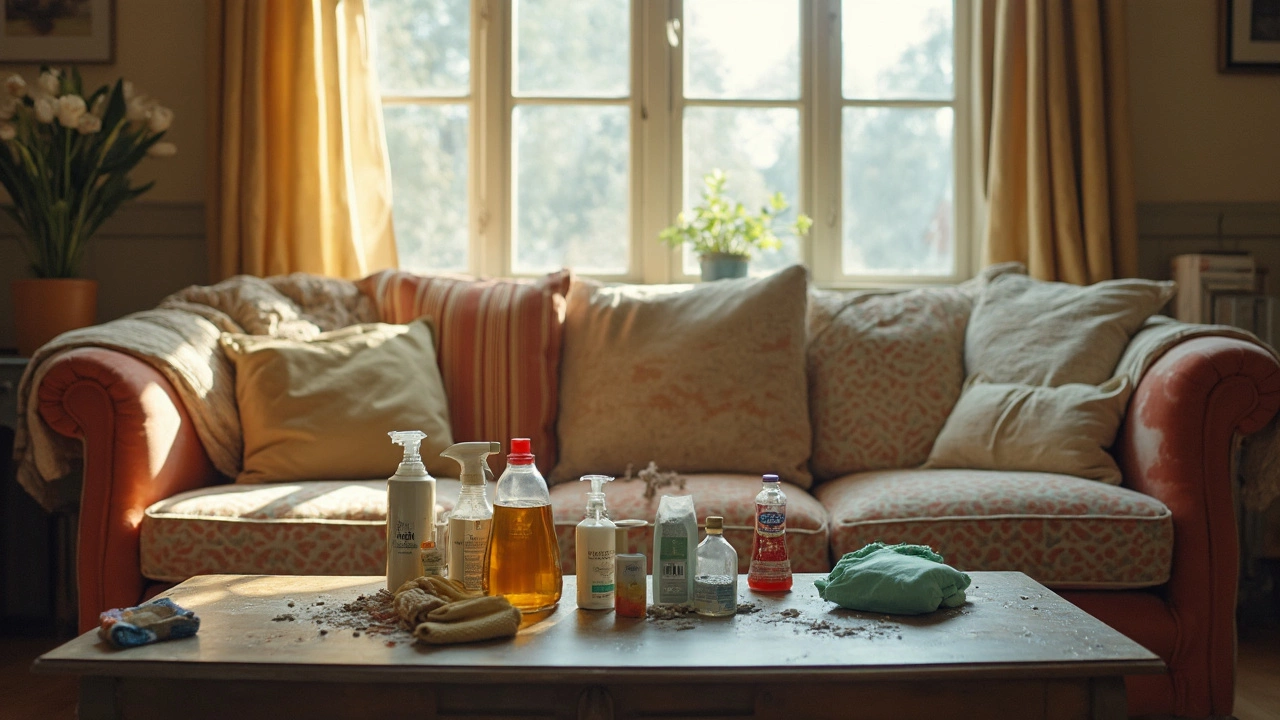Fabric Damage: Spot It, Stop It, Fix It
Ever notice a fresh snag on your sofa or a faded patch on a favourite curtain? That’s fabric damage talking. It can happen from everyday wear, spills, pets, or just plain bad luck. The good news? Most of those problems are fixable with a few simple steps and the right products.
Common Causes and How to Spot Them
First, know what you’re dealing with. Tears, fraying, stubborn stains, and colour loss are the usual suspects. A tiny pull on a seam can turn into a big rip if it’s ignored. Pet claws, rough pet beds, or dragging furniture across rough floors leave tell‑tale marks. Look for loose threads, puckering, or dull spots – they’re early warning signs before the damage spreads.
Prevention Tips You Can Start Today
Stopping damage before it starts saves time and money. Rotate cushions every few weeks so weight is spread evenly. Use slipcovers or throws on high‑traffic sofas, especially if you have kids or pets. Keep sharp objects away from fabric surfaces and place felt pads under coffee tables to avoid dents on upholstery.
Avoid harsh cleaners. Many commercial sprays contain acids that break down fibers over time. Stick to mild, pH‑balanced cleaners or homemade solutions like a mix of water, a few drops of dish soap, and a splash of white vinegar. Test any new cleaner on a hidden spot first – you’ll see if it discolours or weakens the fabric.
For curtains, a quick vacuum with a brush attachment removes dust that can cause wear. If you live in a sunny spot, consider a UV‑blocking window film; sunlight fades colours and weakens fibers.
When spills happen, act fast. Blot – don’t rub – with a clean cloth. Pressing a dry towel onto the area lifts liquid without pushing it deeper. For oily stains, sprinkle a little baking soda, let it sit 10‑15 minutes, then vacuum. The powder absorbs the oil, making the next cleaning step easier.
DIY Repairs That Really Work
Got a small tear? Needle and thread can do wonders. Use a colour‑matched polyester thread and a sharp upholstery needle. Stitch a tight, invisible seam, then reinforce the edges with a fabric glue for extra hold.
For frayed edges, a simple fabric sealant spray stops further unraveling. Spray lightly, let it dry, and the fibres lock together. If the fabric is heavily worn, consider a patch. Cut a piece of matching fabric, attach it with a strong upholstery adhesive, and press firmly. The patch blends in and gives the area new life.
Stubborn stains like wine or ink need a bit more muscle. Mix equal parts hydrogen peroxide and water, add a drop of dish soap, and apply with a cotton ball. Dab, don’t rub, until the stain lifts. Rinse the area with a damp cloth and let dry.
When in doubt, professional cleaning can rescue delicate fabrics. A pro knows the right solvents and techniques for silk, velvet, or antique upholstery. It’s often cheaper than replacing the whole piece.
Bottom line: keep an eye on your fabrics, act quickly on spills, and use gentle cleaners. A little routine maintenance goes a long way in stopping small problems from turning into costly repairs.

What Should Not Be Done When Cleaning Upholstered Furniture
Too many people ruin their furniture by following bad cleaning advice. This article uncovers common mistakes to avoid when cleaning upholstery, from using too much water to picking the wrong products. Simple changes in approach can save your couch from damage and keep it looking fresh. Expect practical tips and straight talk that help protect your furniture investment. No confusing jargon, just real advice.
Read More